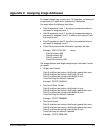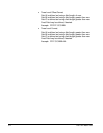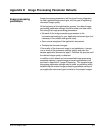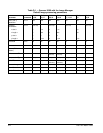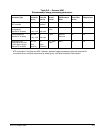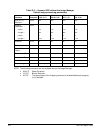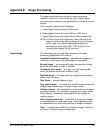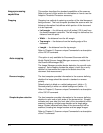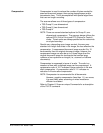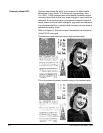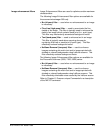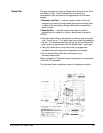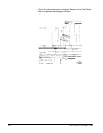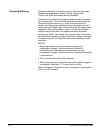
A-61122/A-61124 March 1999 E-3
Compression
Compression is used to reduce the number of bytes needed for
scanned document images, thus saving storage space and/or
transmission time. This is accomplished with special algorithms
that use run-length encoding.
The scanner allows one of three types of compression:
• TSS Group III, one-dimensional
• TSS Group III, two-dimensional
• TSS Group IV
NOTE: There are several standard options for Group III, one-
dimensional compression. The scanner always utilizes the
optional EOL (End of Line) and RTC (Return to Control)
codes. These codes are always padded so the code ends
on a byte boundary.
Results vary, depending upon image content; the more non-
standard run length that exists in the image, the less effective the
compression. A compressed document image may be 5 to 15
times smaller than the original document image; however, the
compressedimagecanalsobeupto5timeslargerthanthe
original document image for documents that contain large
numbers of non-optimum run-length (i.e., scanned or halftone
documents).
Compression is expressed in terms of a ratio. The ratio is a
measure of how well a digitized image can be compressed. A
compression ratio of 10:1 indicates a large reduction in file size
after compression. A compression ratio of 1:1 indicates no
reduction in file size after compression.
NOTE: Compression is recommended for all documents.
However, negative compression (less than 1:1) can occur;
it is most likely when screening or mixed mode/error
diffusion is enabled.
Refer to Chapter 6, Scanner-unique Commands for a description
of the FX/Y/Z command.



